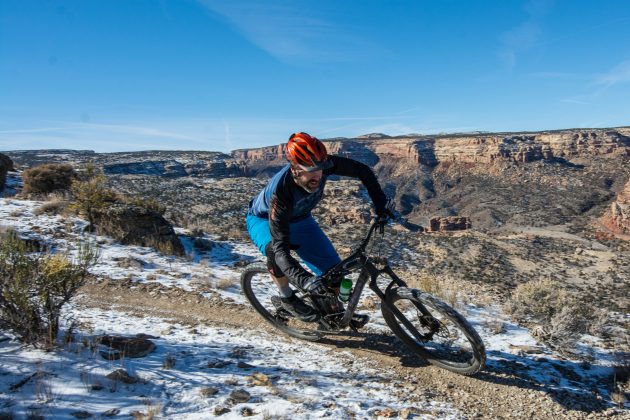In Print: Trek Slash 8
Originally posted on July 19, 2019 at 0:01 am by Zach WhiteEditor’s Note: This review originally appeared in issue 210 of Dirt Rag Magazine. Like what you see? Subscribe now to catch issue 212, flying into mailboxes soon.
by Zach White
2019 Trek Slash 8 review
Price: $3680
Sizes 15.5, 17.5, 18.5, 19.5, 21.5 (tested)
Online: trekbikes.com
Tester: Zach White
Age: 45
Weight: 195 lbs.
Height: 6’3”
Inseam: 32”
Top Tube: 25.6”
Head Tube: 65.1° (low), 65.9° (high)
Seat Tube: 74° (low), 74.9° (high)
BB Drop: 2.8 (low), 2.1 (high)
Chainstays: 17”
Weight: 31.2 lbs without pedals
Trek’s new aluminum, base-model 29er Slash 8 arrived to mixed emotions. On one hand, the top-tier carbon Slash 9.9 with 27.5-inch wheels I’d reviewed in 2014 brought back great memories. On the other hand, the last “long-travel” 29er from Trek that came across my radar back in 2013 was such a miss for me that I sent it back and didn’t write my review. All brands have the same ups and downs but for some reason, it’s always Trek that falls into the loaded question, “Treks are good bikes, right?” Nails on a chalkboard. At least this time around, my answer is yes.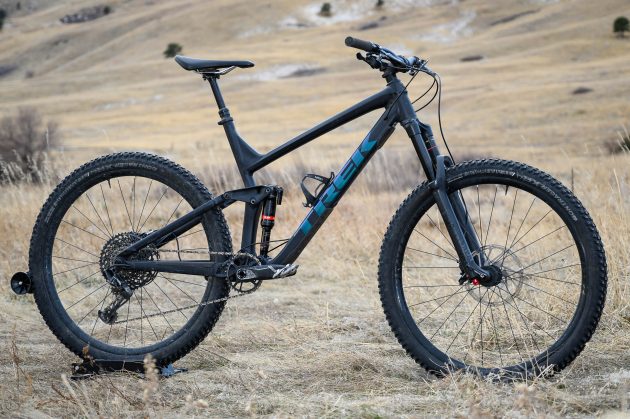
The Bike
Marketed as an enduro mountain bike, the 2019 Slash has 150 mm of rear wheel travel paired with a 160 mm Rockshox Yari RC fork. Rear suspension is handled by a thru-shock style trunnion mounted RE:activ Rockshox RT3. While thru-shocks aren’t anything new, Trek’s work with Penske Racing to design what they claim to be a regressive spring rate is rather interesting, albeit a bit difficult to explain in a couple of sentences. Traditional shocks have an Internal Floating Piston (IFP) that separates an oil reservoir and an air chamber. When the shock compresses, the damper piston displaces a volume of oil, which thereby displaces the IFP and compresses the air in the chamber by an equal volume. Upon rebound, the IFP returns to its original position, which is fine and dandy but can lead to some “lag time” in shock movement. The Thru Shaft design eliminates the Internal Floating Piston (IFP) because the shaft exits the shock as the damper piston moves, effectively compensating for the change in oil volume. As for RE:activ technology, the more free-flowing and consistent oil characteristics in the thru-shaft design allows for what sounds like a damper that can react more quickly to both low-speed and high-speed input— i.e., rider input and bumps on the trail. It’s another mousetrap in the world of suspension design, but from my impressions, it seems like Trek is on to something.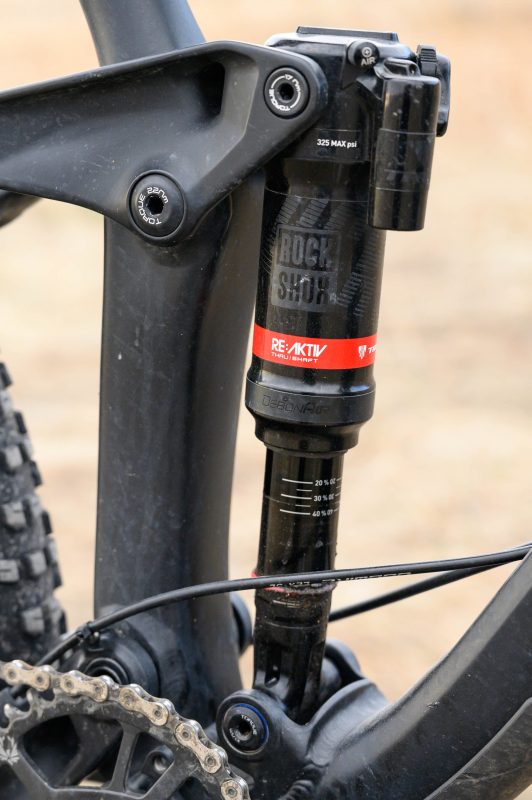
The Slash’s straight downtube provides improved strength/stiffness-to-weight ratio over that of downtubes curved on the head tube end to avoid being damaged by fork crowns. A trade-off to this added performance in the frame is the necessity of Trek’s Knock Block, which is a steering limiter system. A frame-mounted chip in the top tube works with the stem (and a spacer) to keep the fork crown (and bars) from turning far enough to hit the frame. If that system fails, there’s a bumper-style frame protector right where the fork crown would hit, which also happens to make a great scuff guard for tailgate transport. It is a Trek-specific system, but they offer a spacer kit for those who want to run a non-Bontrager stem.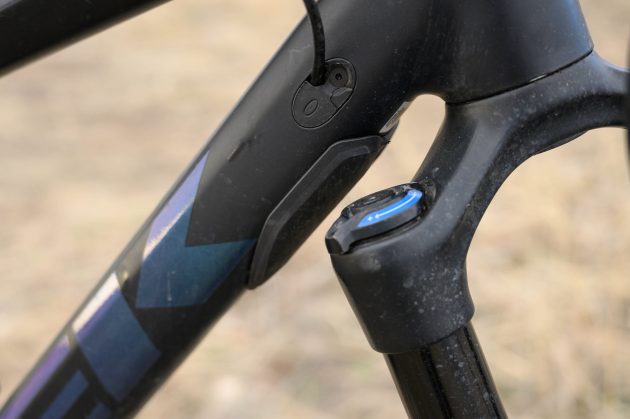
The Ride
Initial bike setup was in the “low” geometry setting with roughly 28-percent sag in the rear, and about 22-percent sag in the fork. All damping options were wide open, or at least within a couple of clicks, to give the suspension a chance to reveal itself. Climbing in open mode was pleasantly efficient while seated, and didn’t get too bobby while pedaling out of the saddle, either. The 65.1-degree headtube required a bit more focus on climbs, and tended to flop from one side to the other if attention was lost on it. As trail conditions went from dry to muddy and snowy, any soft stuff that the front wheel would sink into really highlighted the effort needed to keep the front wheel pointed in the right direction.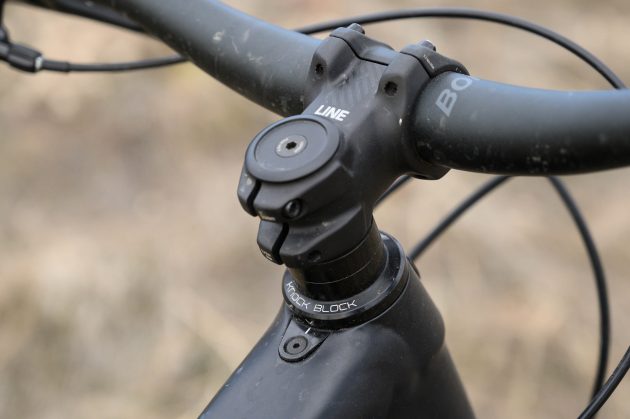
Suspension performance over rough stuff was impressive, at least in the rear. There was a harmonic disconnect between the abuse those 29-inch wheels were taking and what the rider was feeling. The Rock Shox Yari seemed to hiccup unexpected deflections as if its damping was choked out, or if there were too much pressure in the air chamber. It wasn’t horrible, but with damping wide open and a little reduction in air pressure, it still didn’t quite match the performance of the rear-end. One personal theory from a 200-lbs “Old guy aggressive” trail rider is that Trek’s straight downtube offers so much stiffness up front that it may put all perfectly normal flex duties onto the Yari fork, which is not the stiffest chassis out there.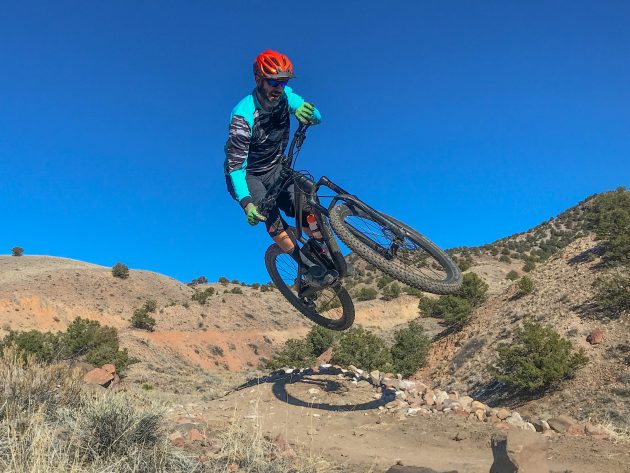
Just about any size-XL, longer-travel 29er trail bike is going to be a tight fit on trails that are a few years old and not designated as “flow.” That said, the Slash was impressively nimble through some pretty tight, chunky and twisty trails. Switchbacks gave it a bit of a challenge, and often required a little nose pick or hop to get through, although switching the Mino Link over to “high” mode put a noticeable dent in being able to slide through such sections.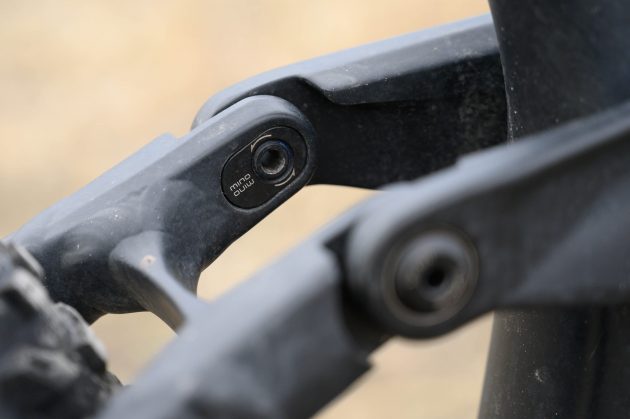
In “high” mode, climbing on the Slash was a noticeable improvement. That .8-degree increase in headtube angle really reigned in the front wheel from wandering on climbs, and all but omitted pedal strikes through rock gardens that had been a slight issue in “low.” Descending was still stable and predictable, if not slightly better in anything shy of straight fall-line chutes. All said, the Slash felt just about perfect in “high” for typical Colorado trail riding, but I could see taking the literal 1-minute effort to swap the Mino Link into “low” geometry for park or shuttle days. One thing to note on park days, however, is the Knock Block. Mid-air, that stopping point is a bit unnerving the first few times. Otherwise, Knock Block was pretty much out of sight and out of mind, save moving the bike around sans rider.
Conclusion
Trek’s new budget-oriented Slash 8 was a pleasure to ride, and that’s by comparison of a constant bombardment of much more expensive and lighter trail bikes. As someone who’s raced more than a few enduros over the years, I’d be perfectly comfortable taking it to the next EWS, albeit with a bit of suspension work. That said, it’s a shame that Trek opted to market it in such a relatively narrow scope as an enduro-specific mountain bike, as it’s an absolutely fantastic option for someone simply looking for a trail bike.